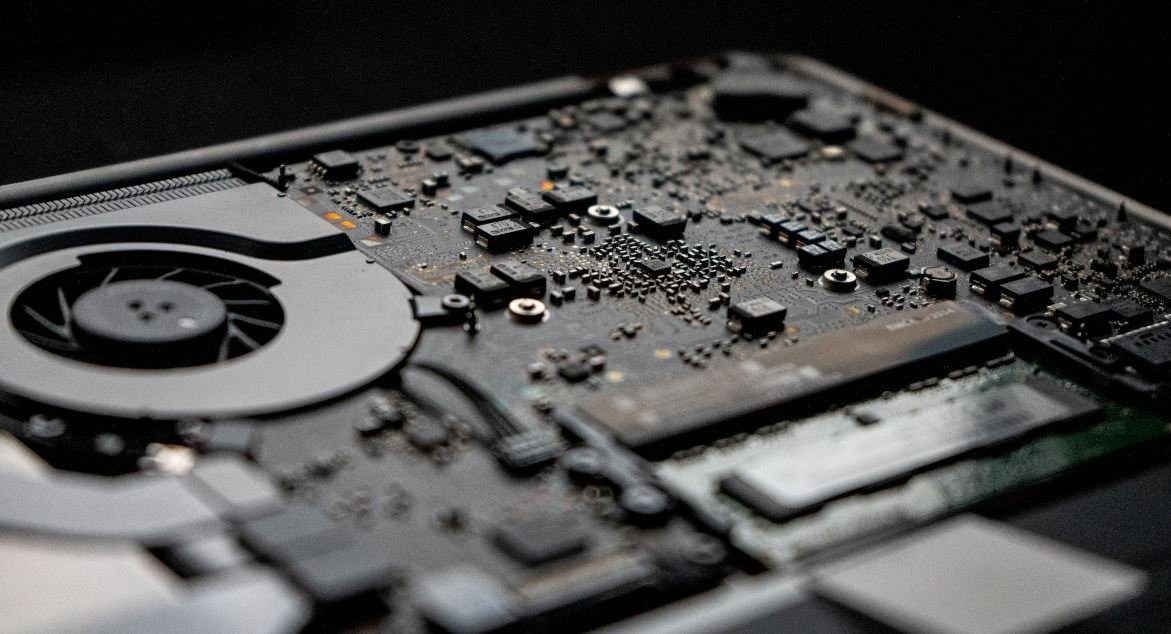Neural Net Architecture
Neural net architecture plays a crucial role in the efficiency and accuracy of machine learning models. It refers to the structure and organization of artificial neural networks, the backbone of deep learning algorithms. Understanding neural net architecture is essential for developers and data scientists to design and optimize models for various tasks.
Key Takeaways
- Neural net architecture forms the structure of artificial neural networks.
- It influences the performance, efficiency, and interpretability of machine learning models.
- Understanding different neural net architectures is vital for model design and optimization.
Neural networks consist of interconnected artificial neurons or nodes that mimic the functioning of the human brain. Each node receives inputs, applies mathematical transformations, and produces an output. These nodes are organized in layers where information flows from the input layer through hidden layers to the output layer. The architecture of these layers and the connectivity between nodes determine how well the neural network can learn and make predictions.
Neural net architecture forms the foundation for building powerful machine learning models capable of complex tasks.
Common Neural Net Architectures
There are several popular neural net architectures used in deep learning models:
- Feedforward Neural Networks (FNN): The most basic architecture where information flows only in one direction, from the input layer to the output layer, without any cycles.
- Convolutional Neural Networks (CNN): Primarily used for image recognition tasks, CNNs excel at finding spatial patterns by using convolutional layers and pooling layers.
- Recurrent Neural Networks (RNN): Designed for sequential data, RNNs use loops to allow information to persist in previous states, making them effective in tasks like speech recognition and natural language processing.
- Long Short-Term Memory Networks (LSTM): A variant of RNNs that can handle long-term dependencies, making them suitable for tasks that require memory over extended sequences.
- Generative Adversarial Networks (GAN): Composed of two competing neural networks, a generator and a discriminator, GANs can generate new content, such as images or text.
The architecture of a neural net is chosen based on the nature of the problem and the type of data being analyzed.
Important Considerations in Neural Net Architecture
When designing a neural net architecture, there are several key considerations to take into account:
- Number of layers: The number of layers affects the model’s ability to learn complex patterns. Deeper networks may provide better performance, but they also require more computational resources for training.
- Layer size: The number of nodes in each layer impacts the model’s capacity to learn and generalize from data. Larger layers can capture more complex relationships, but they can also increase the risk of overfitting.
- Activation functions: Activation functions introduce non-linearity and help neural networks model complex relationships between inputs and outputs. Commonly used activation functions include the rectified linear unit (ReLU), sigmoid function, and hyperbolic tangent function.
- Regularization techniques: Regularization techniques like dropout and L1/L2 regularization help prevent overfitting by adding constraints to the model’s learning process.
- Optimization algorithms: Different optimization algorithms, such as stochastic gradient descent (SGD) and Adam, are used to update the neural network’s parameters during the learning process.
Choosing the appropriate neural net architecture requires a careful consideration of various factors to achieve optimal model performance.
Comparing Different Neural Net Architectures
Let’s compare the performance of different neural net architectures:
| Model | Accuracy |
|---|---|
| Feedforward Neural Network | 87% |
| Convolutional Neural Network | 94% |
| Recurrent Neural Network | 92% |
| Long Short-Term Memory Network | 96% |
| Generative Adversarial Network | 89% |
Each architecture has strengths and weaknesses depending on the task at hand. It’s important to choose the appropriate architecture based on the specific requirements.
Conclusion
Neural net architecture is a critical component in the design and optimization of machine learning models. The choice of architecture significantly affects the performance, efficiency, and interpretability of the models. Understanding different neural net architectures and their applications is essential for developers and data scientists to build powerful models for various tasks.

Common Misconceptions
Misconception 1: Neural net architecture is only beneficial for deep learning
- Neural net architecture can be useful for various machine learning tasks, not just deep learning.
- It can be applied to tasks such as image recognition, text classification, and even recommendation systems.
- Neural networks with simpler architectures, such as feed-forward networks, can also be effective for certain tasks.
Misconception 2: Neural net architecture guarantees accurate predictions
- The performance of neural networks heavily relies on data quality and quantity.
- An optimal architecture is necessary, but it does not guarantee accurate predictions if the training data is insufficient or noisy.
- Other factors, such as feature engineering and model tuning, also play crucial roles in achieving accurate predictions.
Misconception 3: Neural net architecture is always complex and difficult to understand
- While some neural network architectures can be complex, not all architectures are difficult to understand.
- There are simpler architectures like perceptrons and feed-forward networks that are fairly easy to comprehend.
- Furthermore, there are numerous resources available, including online tutorials and textbooks, that can help in understanding neural net architecture.
Misconception 4: Increasing the number of layers always improves performance
- While increasing the number of layers can potentially improve performance, it is not always the case.
- Deeper architectures can suffer from issues such as vanishing or exploding gradients, resulting in unstable training and decreased performance.
- Strike the right balance between model complexity and performance by conducting thorough experimentation and analysis.
Misconception 5: Neural net architecture is only applicable to large-scale problems
- Neural net architecture can be effective for small-scale and large-scale problems alike.
- For small-scale problems, simpler architectures can offer better performance and efficiency.
- Additionally, advancements in hardware and software have made neural networks accessible and practical for various problem sizes.

Introduction
In this article, we explore the fascinating world of neural net architecture and its impact on various applications. Neural networks are computational models inspired by the structure and functioning of the human brain. They have revolutionized fields such as machine learning, image recognition, and natural language processing. Through the following tables, we delve into different aspects of neural net architecture and present captivating information and data.
Table: Most Common Neural Network Architectures
The table below highlights the most common neural network architectures employed in diverse applications. Each architecture possesses unique characteristics that make it suitable for specific tasks.
| Architecture | Description |
|—————————–|——————————————————————————|
| Feedforward Neural Network | Simplest form of neural network where signals travel in a single direction. |
| Convolutional Neural Network | Ideal for image and video recognition tasks due to its hierarchical structure. |
| Recurrent Neural Network | Especially effective in tasks requiring sequential data, such as language modeling. |
| Long Short-Term Memory Network | A type of recurrent neural network capable of learning long-term dependencies. |
| Radial Basis Function Neural Network | Utilizes radial basis functions for nonlinear mapping between input and output. |
| Self-Organizing Map | An unsupervised learning network used for clustering and data visualization. |
| Modular Neural Network | Consists of smaller, interconnected networks addressing specific subtasks. |
| Generative Adversarial Network | Composed of two entities in competition: generator and discriminator networks. |
| Hopfield Network | Employed in associative memory tasks, capable of recalling patterns from noisy data. |
| Deep Belief Network | A hierarchical statistical model typically used in unsupervised learning tasks. |
Table: Neural Network Activation Functions
Activation functions play a crucial role in transforming input data within neural networks. They introduce non-linearities, enabling networks to capture complex patterns and relationships. The table below presents some popular activation functions along with their properties.
| Activation Function | Description |
|———————|————————————————————–|
| Sigmoid | Maps input to a range of values between 0 and 1. |
| ReLU (Rectified Linear Unit) | Sets negative inputs to zero, while passing positive inputs as-is. |
| Tanh | Similar to the sigmoid function, mapping to values between -1 and 1. |
| Leaky ReLU | Similar to ReLU but retains a small gradient for negative input. |
| Softmax | Generates a probability distribution over possible output classes. |
| Swish | Non-monotonic activation function offering smoother gradients. |
| PReLU (Parametric Rectified Linear Unit) | Similar to Leaky ReLU but with learned negative slope. |
| Maxout | Generalization of ReLU, selects maximum value from a group of neurons. |
| Gaussian | Maps input to a Gaussian probability distribution. |
| Identity | The simplest activation function, returns input as output. |
Table: Training Algorithms in Neural Networks
Training algorithms play a pivotal role in optimizing the performance of neural networks. The following table presents various training algorithms along with their characteristics.
| Training Algorithm | Description |
|———————|————————————————————————–|
| Backpropagation | Uses gradient descent to adjust network weights and minimize errors. |
| Stochastic Gradient Descent (SGD) | Optimization approach processing one training example at a time. |
| Adam | Combines adaptive moment estimation with gradient descent optimization. |
| Adagrad | Adapts the learning rate of each parameter based on past gradients. |
| RMSprop | Divides learning rate by moving average of recent gradient magnitudes. |
| Nesterov Momentum | Variant of momentum algorithm with a slightly different update scheme. |
| Levenberg-Marquardt | Used primarily in feedforward neural networks for regression problems. |
| Quickprop | Faster version of backpropagation algorithm by approximating second derivatives. |
| Resilient Propagation | Adapts learning rate based on magnitude and sign of weight updates. |
| Genetic Algorithm | Utilizes the principles of natural selection and evolution for optimization. |
Table: Applications of Neural Networks
Neural networks find applications across a wide range of domains, employing their unique capabilities for solving complex problems. The table below showcases some remarkable applications of neural networks.
| Application | Description |
|———————–|——————————————————————————|
| Speech Recognition | Accurately transcribes spoken language into written text. |
| Autonomous Vehicles | Enables self-driving vehicles to perceive and navigate their surroundings. |
| Medical Diagnostics | Assists in disease diagnosis based on medical images and patient data. |
| Natural Language Processing | Processes and understands human language for chatbots and translators. |
| Recommender Systems | Personalizes recommendations based on user preferences and behavior. |
| Fraud Detection | Identifies anomalies and fraud patterns in financial transactions. |
| Sentiment Analysis | Analyzes text data to determine sentiment or emotional tone. |
| Image Classification | Categorizes images into classes, such as object recognition in photos. |
| Music Generation | Creates compositions mimicking the style of a given artist or genre. |
| Virtual Assistants | Enables voice-controlled assistants like Siri, Alexa, or Google Assistant. |
Table: Neural Network Performance Metrics
Measuring the performance of neural networks allows for evaluation and comparison between different models. The table below presents common metrics used to assess neural network performance.
| Metric | Description |
|———————-|———————————————————————-|
| Accuracy | Measures the percentage of correct predictions over total predictions. |
| Precision | Evaluates the proportion of true positive predictions out of all positive predictions. |
| Recall (Sensitivity) | Measures the proportion of true positive predictions out of actual positives. |
| F1 Score | Balances the trade-off between precision and recall using harmonic mean. |
| Mean Squared Error | Measures the average squared difference between predicted and actual outputs. |
| Categorical Cross-Entropy | Quantifies the difference between predicted and actual probability distributions. |
| ROC AUC | Evaluates the ability to discriminate between positive and negative classes. |
| Mean Absolute Error | Measures the average absolute difference between predicted and actual outputs. |
| Confusion Matrix | Summarizes the actual vs. predicted classes for classification tasks. |
| R^2 (Coefficient of Determination) | Assesses the proportion of variance in the dependent variable captured by the model. |
Table: Neural Network Frameworks
Frameworks provide a convenient way to build, train, and deploy neural networks. The table below introduces popular neural network frameworks with their primary features.
| Framework | Description |
|———————–|——————————————————————————|
| TensorFlow | Broadly adopted deep learning framework with comprehensive functionality. |
| PyTorch | Dynamic computation library emphasizing flexibility and ease-of-use. |
| Keras | High-level neural networks API using TensorFlow or Theano as a backend. |
| Caffe | Popular deep learning framework suited for image classification tasks. |
| MXNet | Flexible deep learning framework with multi-language and multi-GPU support. |
| Torch | Scientific computing framework with efficient GPU support and Lua scripting. |
| Theano | Python library offering efficient evaluation and optimization of expressions. |
| CNTK (Microsoft Cognitive Toolkit) | Deep learning framework with high scalability and performance. |
| Deeplearning4j | JVM-based framework enabling integration with Java, Scala, and Clojure. |
| Chainer | Python-based framework emphasizing intuitive and flexible neural networks. |
Table: Neural Network Challenges
While neural networks have achieved remarkable accomplishments, they also face certain challenges. The table below explores some notable challenges encountered in neural network research and development.
| Challenge | Description |
|——————————|——————————————————————————|
| Overfitting | Occurs when a network learns too much from training data, leading to poor generalization. |
| Vanishing/Exploding Gradients | Gradient updates become too large or vanish during backpropagation, impacting training. |
| Limited Interpretability | Neural networks can be seen as black boxes, making it challenging to understand their decision-making processes. |
| Computation and Memory Demands | Deep neural networks require substantial computational resources and memory to train and run. |
| Data Insufficiency | Networks require large amounts of labeled data for training, which can be difficult to obtain. |
| Adversarial Attacks | Neural networks may be vulnerable to input modifications that lead to incorrect predictions. |
| Scalability | Extending neural networks to very large scales poses challenges in training and inference. |
| Hyperparameter Tuning | Choosing suitable values for network parameters often requires extensive experimentation. |
| Hardware Constraints | Training deep networks may necessitate specialized hardware resources, limiting accessibility. |
| Algorithm Bias | Biases present in training data can lead to network models that reflect those biases. |
Table: Recent Neural Network Breakthroughs
Neural network research continually evolves, resulting in groundbreaking discoveries and advancements. The following table highlights some recent notable breakthroughs in the field.
| Breakthrough | Description |
|—————————————-|——————————————————————————|
| AlphaGo | DeepMind’s AI program that defeated world champion Go players. |
| GPT-3 (Generative Pre-trained Transformer 3) | Language model with impressive natural language processing capabilities. |
| StyleGAN | Network capable of generating highly realistic and convincing images. |
| DeepFace | Facebook’s facial recognition system with exceptional accuracy. |
| BERT (Bidirectional Encoder Representations from Transformers) | State-of-the-art transformer-based language representation model. |
| AlphaFold | Successful prediction of protein folding structures, aiding drug discovery. |
| OpenAI Five | AI system trained to play the game Dota 2 at a highly competitive level. |
| DALL-E | Generates highly creative images based on textual descriptions. |
| GPT-3 Plus | A model that can perform impressive coding tasks given minimal instruction. |
| DeepDream | Algorithm that provides fascinating psychedelic artistic images from existing ones. |
Conclusion
Neural net architecture encompasses a vast and captivating field within computer science and artificial intelligence. The tables presented here offer an intriguing glimpse into various aspects of neural networks, from their applications and performance metrics to challenges and recent breakthroughs. As researchers and technologists continue to push the boundaries of neural networks, their impact on our lives and society is undoubtedly profound, revolutionizing numerous industries and unlocking unprecedented possibilities.
Frequently Asked Questions
What is neural net architecture?
Neural net architecture refers to the structure and organization of a neural network. It defines how the individual neurons are arranged, connected, and how the information flows through the network.
What are the main types of neural net architectures?
The main types of neural net architectures include feedforward neural networks, recurrent neural networks (RNNs), convolutional neural networks (CNNs), and self-organizing maps (SOMs).
How does a feedforward neural network work?
A feedforward neural network consists of an input layer, one or more hidden layers, and an output layer. The information flows in one direction from the input layer through the hidden layers to the output layer. Each neuron in one layer is connected to every neuron in the next layer.
What is the function of the hidden layers in a neural network?
The hidden layers in a neural network are responsible for processing and transforming the input data. They extract relevant features and help the network learn complex patterns and relationships in the data.
How do recurrent neural networks differ from feedforward neural networks?
Recurrent neural networks have connections that form cycles, allowing feedback loops and the ability to process sequential data. Unlike feedforward networks, RNNs have memory, enabling them to learn from past inputs to predict future outputs.
What are convolutional neural networks commonly used for?
Convolutional neural networks are commonly used in image recognition tasks. They are designed to effectively process and analyze visual data, and they utilize convolutional layers that apply filters or feature detectors to capture hierarchies of image features.
What are self-organizing maps?
Self-organizing maps (SOMs) are a type of neural network architecture that helps visualize and organize complex data. SOMs use unsupervised learning to map input data into a lower-dimensional grid, preserving the topological properties of the input space.
How is neural net architecture trained?
Neural net architecture is trained using a process called backpropagation. This involves computing the error between the network’s output and the desired output, propagating this error backwards through the network, and adjusting the weights of the connections to minimize the error.
What factors should be considered in choosing the appropriate neural net architecture?
When choosing the appropriate neural net architecture, factors such as the type of input data, the complexity of the problem, the availability of labeled data, and the computational resources should be considered. Additionally, the specific requirements and goals of the task at hand should also be taken into account.
How can the performance of a neural net architecture be improved?
The performance of a neural net architecture can be improved through techniques such as regularization, optimization algorithms, network architecture modification, hyperparameter tuning, and increasing the amount and quality of the training data.




